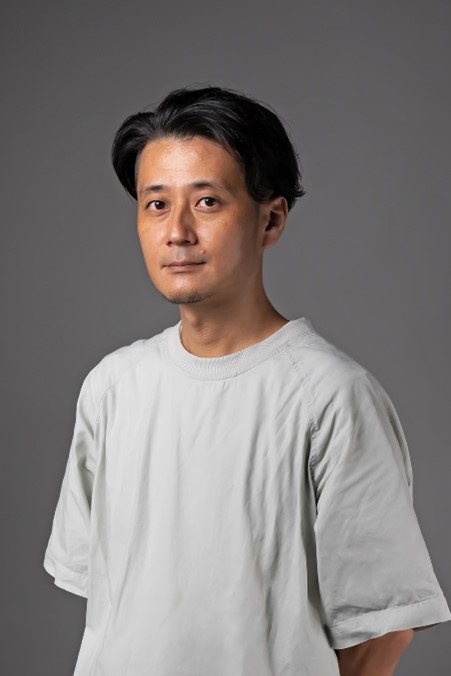
――― I’ve been looking forward to interviewing you!
Could you briefly tell us about your department and what you do for work?
I graduated from Kobe Design University’s Visual Information Design Department,
after which I joined Namco Ltd. as a new graduate hire in 1998.
My initial duties were 2D design and video editing,
but then I got to try my hand at video and art directing.
For the Ace Combat series, I took the position of Narrative Director,
where I created trailers and provided general direction for ingame visuals.
――― How have your hobbies and interests influenced how you make games?
I played in a band when I was in school. Amateur bands were popular back then, and I would borrow and lend CDs from friends, and listen to samples at the record store when we had time. I got to experience all kinds of music from Japanese rock, western music, metal, blues, to country music.
Much of my spare time after graduating high school and throughout university was spent watching movies. Not only popular movies, but black and white films, anime, period films, westerns, direct-to-video films, and even B-grade horror. I frequented movie theatres and borrowed everything the local video rental store had in stock.
Every time I find a movie I enjoyed, I would watch the films that inspired the director, or look into the origins of a band I liked the music of. This would occupy some of my time until I satiated my curiosity, where I would move on to the next thing that caught my attention, repeating the cycle. People say I’m fastidious, but really, I just get bored easily.
That’s why I’ve never been able to continue any one thing for a long time; I’m all over the place.
That said, this diversity in interests comes in handy for work. For example, even after a visual concept or direction for a game has been decided, budget, schedule, technical issues, and other factors means that game development is never smooth sailing, and that we need to think of diverse ways to achieve the desired visuals. There are all kinds of problems we need to tackle, which is why I think it’s important to have a library of solutions in mind. The key is to fit these problems with ideas put into this library beforehand.
■ Games he contributed significantly to:
Ace Combat 3: Electrosphere (2D Works, Visuals Production)
Ridge Racer V (Visuals Director)
7: Molmorth no Kiheitai (Cinematics Director, Movie Production)
Ace Combat 04: Shattered Skies (Ingame Cinematics Director, Visuals Assistant)
Venus & Braves (Cinematics Director, Movie Production)
Ace Combat 5: The Unsung War (Cinematics Director)
Ace Combat Zero: The Belkan War (Art Director, Story, Cinematics)
Ace Combat: Assault Horizon (Visual Art Director, Cinematics)
Fragile Dreams: Farewell Ruins of the Moon (Storyboards, Cutout Animation Artist)
Ace Combat: Infinity (Art Director, Story, Cinematics)
Ace Combat 7: Skies Unknown (Narrative Director)
Bandai Namco Studios Website Creator Profile: Kosuke Itomi
――― How do you build your library of ideas?
If we talk about the movies I used to watch, the things low budget movies would experiment with were interesting, and I keep these visual techniques in mind when working. The same applies to music. There are many ways to combine audio with visuals, so I keep my eyes and ears trained to methods I feel are awesome. I’m busier nowadays so I don’t watch as many movies as I used to, but I often watch things like travel videos on YouTube to build a library of references.
A YouTube channel I frequent has the 20-something year old creator backpack in foreign countries using local transit, so they would feature things like the local environment, the people, and their culture as he travels. They’re all eye-opening. The videos aren’t dressed up in any way, so the footage feels authentic. The channel is full of information that is not easily accessible otherwise and is very intriguing.
――― That does sound interesting.
It’s fairly easy to imagine how large cities feel in somewhere like the US, but I have no clue when it comes to a place like deep in the mountains of South America. How do the people there live? What kind of people are they? What do they eat? Even in video format, it’s fascinating. When the time comes to concept out something like a village in the mountains, I’ll recall that I saw an old lady pull a donkey in some video I watched and reference it again. It’s become a powerful source of information for me.
――― To think; this wouldn’t have been possible in the past! Can you share any specific experiences where these ideas ended up being useful?
There was a game that I helped developed where release was scheduled to be one year after the project started.
It’s called Ace Combat Zero: The Belkan War.
We didn’t have enough people or time working on it.
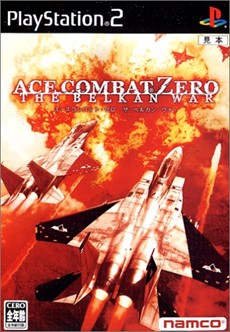
――― One year sounds pretty impossible nowadays, doesn’t it?
Pretty much.
We could reuse parts of the model assets from Ace Combat 5, but the story and other stuff had to be brand new. The game director and I started off by deciding that we wanted to have aerial duels with a bunch of enemy ace pilots.
We then needed to find a scriptwriter, but there was no time,
so I wrote a basic story in about three days.
――― Three days?!
I had to dig deep into my library. Although it was written in the spur of the moment, there were parts that resonated with the director and other people who read it.
It was then divvied up between multiple people to improve it, but the main points, character backgrounds, and worldbuilding didn’t really change from what I wrote initially.
――― I guess you could say you did a mind dump when you wrote it.
We didn’t have any time to look up new ideas, so I incorporated things I liked at the time, and things I liked in the past.
As for the ingame cinematics, we tried using real actors because we thought we needed real people for the concept we were going for. Of course, there were also time and budget considerations. People were really against the idea during production, though.
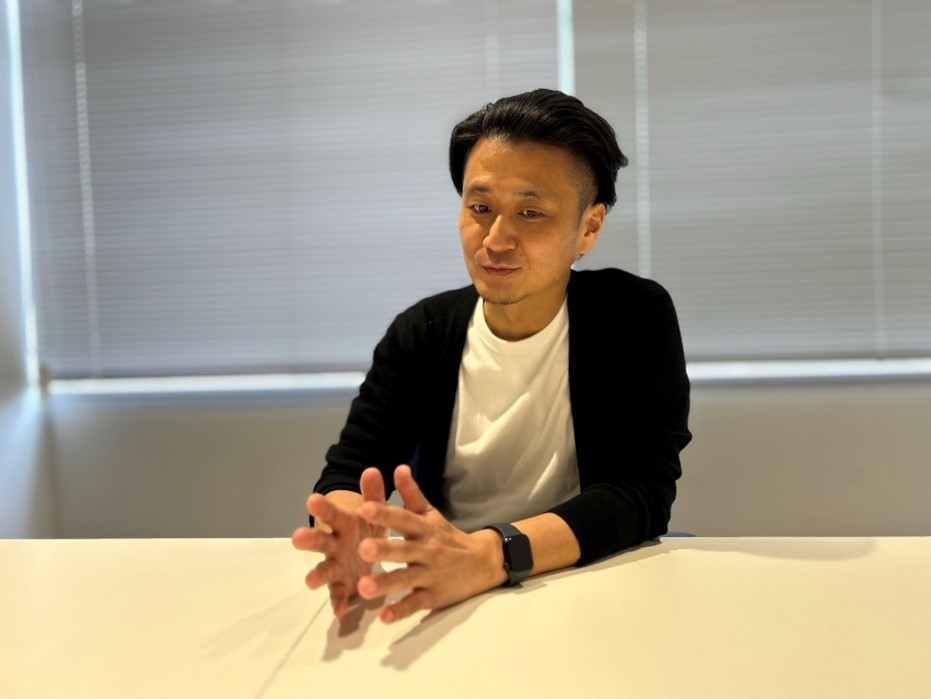
――― Was that because you didn’t have time to use real actors?
This was back in 2006 and the main argument was “games with live-action footage don’t succeed”.
We already had games that used live-action footage at the time but there was still a stigma dividing “games” and “live action”. That’s why they said live action wouldn’t sell, but I thought it would work if I tried taking them as pilot testimony videos.
――― Testimony videos?
Yes, like the interviews often seen in television.
You know how documentaries (in Japan) would dub over interviews where the people were speaking in English? I wanted to replicate that style.
The story setup was “the war happening as you play the game was already over when the interviews take place. The player is an ace pilot who disappeared after the war, and the interviewer would listen to the stories of people who were in the war to find out who the player is.”
Everyone’s seen interview videos before, so that’s why I thought they wouldn’t feel weird in a game even if we used real actors. The backgrounds would be CG to place the actors in the game world. By using real people and not CG for the interviews, it would give them an air of authenticity. The videos were also taken with a stationary camera, which saved on editing.
We deviated a little for the game’s background music as well, incorporating Flamenco-like Spanish guitar.
I got pushback for this too (laugh).
――― At the time, “Ace Combat music” was rock guitar, orchestral, cinematic music – tracks with a grand-feeling overall, right?
The previous game was similar to a blockbuster film in concept and scope, and I wanted to focus more on personal battles in Zero. So I discussed with the sound director about putting in some dry Spanish guitar and Flamenco to help players envision an isolated, desolate battle.
The general opinion was that it wouldn’t fit with fighter jets, but the whole dueling motif was already decided, and of course Westerns come to mind when you say duels. Part of the intention was for us to make a spaghetti Western with fighter jets. I liked Westerns and would often watch them, so this idea was also from the library.
Keiki Kobayashi, the composer for the game, was able to grasp what I wanted to go for and made some wonderful tracks. The main theme, Zero, is now one of the most popular tracks in the Ace Combat series, so I think we made the right choices back then.
All of it was demanding work, but it was fun. Once we had a goal, we could sprint towards it by drawing from our library of ideas and connecting them together.
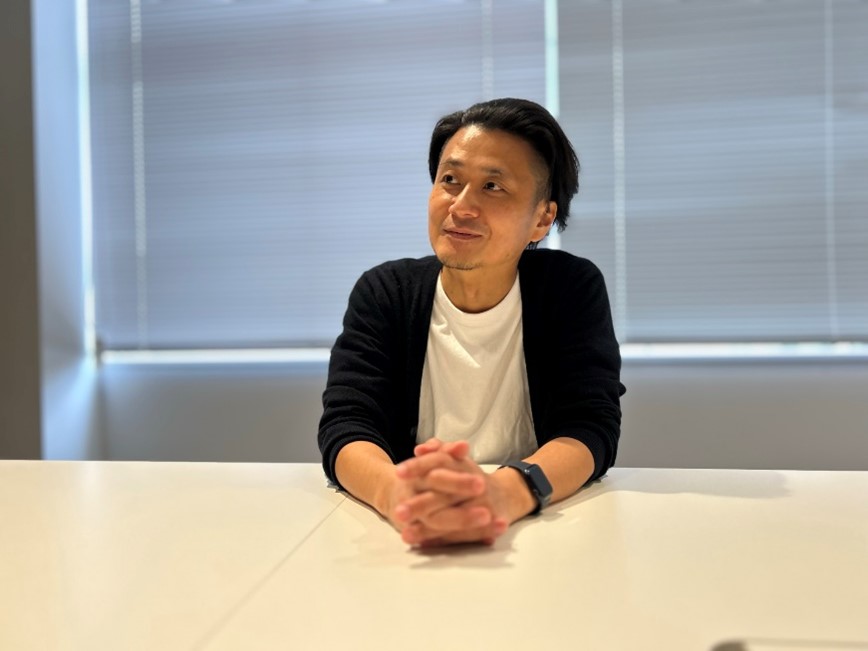
――― Can you tell us something about your role as Narrative Director?
The narrative director manages general audio/visual expressions in a game and how it’s paced; the music, the cinematics, story, etc. Something like working in general production or working as a production director.
As a game, Ace Combat emphasizes making things dramatic, so finding the balance for pacing can be a challenge. Add that to the fact that it’s more shooting game than roleplaying, the characters can’t stand in place and take time to talk. The story has to be told while the player is flying in the air.
The shooting part of the game is handled by a game design director, so the role of the production director is to deliver a satisfying story experience while allowing players to fly around freely in their aircraft.
I’ve worked on cinematics production for a long time, but it’s difficult to find an English equivalent for “production director” with the same duties as what the title means in Japanese; it always ends up as a “something” director.
――― That must make it difficult for people to understand your role on a project.
It does. One day, a project member brought up that “narrative directors” were becoming more common outside Japan, and wondered if that was what I was doing. I thought it fit and that’s when I took on the title of Narrative Director.
――― When you said “more common outside Japan,” you mean in the movie industry?
Even in the games industry, narrative has become a commonly used term. Directly translated into Japanese, it would be monogatari.
When I speak with people from sister companies, they would ask if we had narrative directors. Apparently, they would hire specifically for this role outside Japan.
I think this is because cinematic expression in video games has become more granular. For example, in the past, we could show that characters were conversing by just having them on screen and having their dialog as text on screen. Obviously, this isn’t enough nowadays. The more we can do with character expression, the higher the chance it’ll look “off”, and if it looks off, it’ll ruin immersion.
Everything that happens in a game must be expressed in ways that maintain immersion, so every team needs someone who is capable of narrative design, capable of translating a story into the gameplay experience.
――― Are you thinking of training the people under you about narrative design?
I haven’t reached the point where I can train juniors, but I did start an inhouse narrative design community as a technical R&D initiative.
We meet once a week to analyze how a game immerses the player into its world through UX as a way of doing narrative design research. We have around 20 participants every time.
The sessions don’t have to be super technical; we talk about games that moved us, games that we thought were fun, why they were fun, and what they did to make players feel that way. We also have theme-based discussions like, for example, ways to have players become emotionally attached to a character.
I still have a lot to learn.
――― That sounds interesting! Can non-game creators participate as well?
Yes; we actually had someone from the legal department join us two years ago. Anyone can join as long as they’re a company employee. We want to know what parts of a game resonate with all kinds of people, not just developers.
Since some people are still working from home and there aren’t many opportunities to talk to people outside of our projects, I think these sessions are a good way to communicate with more junior employees and other hires.
I feel that having a place to easily share knowledge lets us discuss issues with audio-visual expression and how to solve them, beyond the bounds of our projects, is an effective way to increase communication within the company.
――― Being able to create such a community within the company sounds really nice.
I’m glad that we started it, though it would be a shame if we ended up not applying any of this knowledge (laugh). It’ll probably take another two to three years before we see the effects of these sessions.
It would be amazing for this to lead to connections being built between people in addition to the knowledge being shared. That way, we’ll better know who to ask when we want to get a second opinion on something.
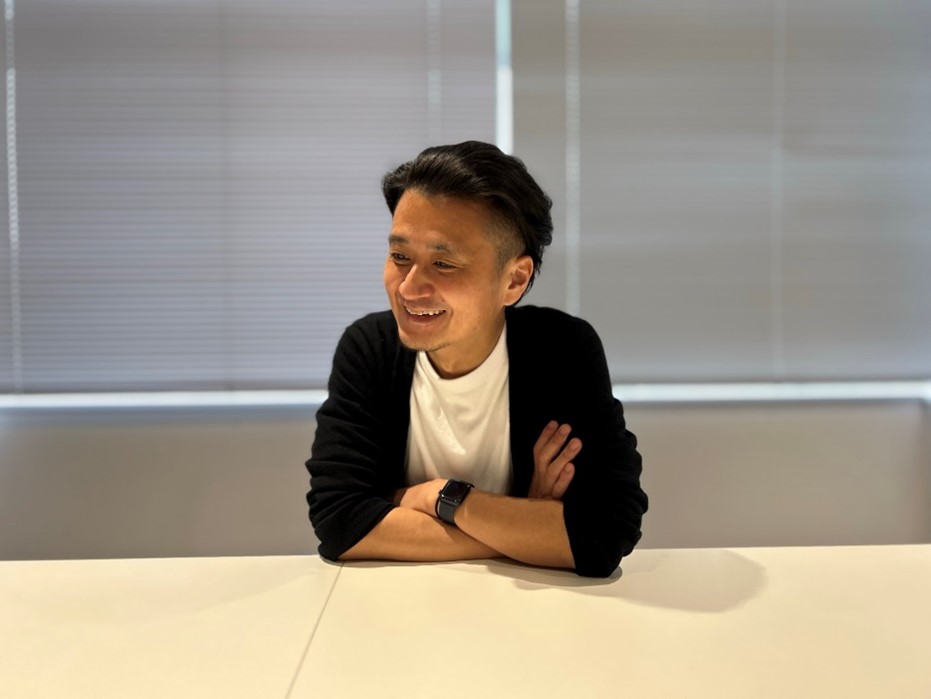
――― What do you do when you’re developing something and you feel there’s a better way to design something, although it’s correct on paper?
Personally, I would try to make a video of the design. I find that it’s better for getting my ideas across to other people.
The senses are a tricky thing to communicate. You can try to explain it with words, but sometimes the idea won’t get across. So, by showing a video, even if it’s a low-quality representation, we can come to a common understanding about what’s good or bad about it.
Videos can come across completely differently if you adjust the timing of a couple of frames and minor changes can make significant improvements. However, if you ask me to put that difference into words, I would say it’s pretty hard. That’s why I think it’s best to make videos of things that are hard to communicate.
――― It’s perfect for someone like you since you studied cinematography and are knowledgeable in music and design.
In that sense, I think my current role fits me best.
――― You’ve already amassed a variety of experiences, but are there other things you’d like to try or experiment with in the future?
I’d like to use games as a starting point to try making things of all kinds of genres. It’d be nice to make a game that naturally makes the player sweat, cry, or laugh.
I also want to try new forms of expression, to see if it’ll work well or not.
――― Does a good challenge put a sparkle in your eye?
If anything, it demoralizes me (laugh). But I get my motivation from knowing that I have to do it, and I know that I grow as a result.
If you keep doing what you’re good at, it becomes second nature. Experience has told me I’m competent at most things, so I end up getting what I can done quickly.
So I don’t feel any growth or excitement unless I put myself in situations that stump or trouble me, or situations where I feel like I can’t turn back.
I hate busywork and find many things tedious, but at the same time it’s not fun if I don’t get involved. It’s a conflicting dynamic. I’ve realized that I need to make things tough for myself or I won’t do it.
――― I see that the experiences you’ve accumulated throughout your life fill out the expansive worlds of the games you help make.
Thank you very much!
[Related articles] Read these interviews if you’re interested in what our visual artists do!Meeting Expectations—How Much Work Goes Into One Frame?
Creating Instantly Identifiable Games! What Goes into Concept Art?
Applying What You Know in Other Contexts




